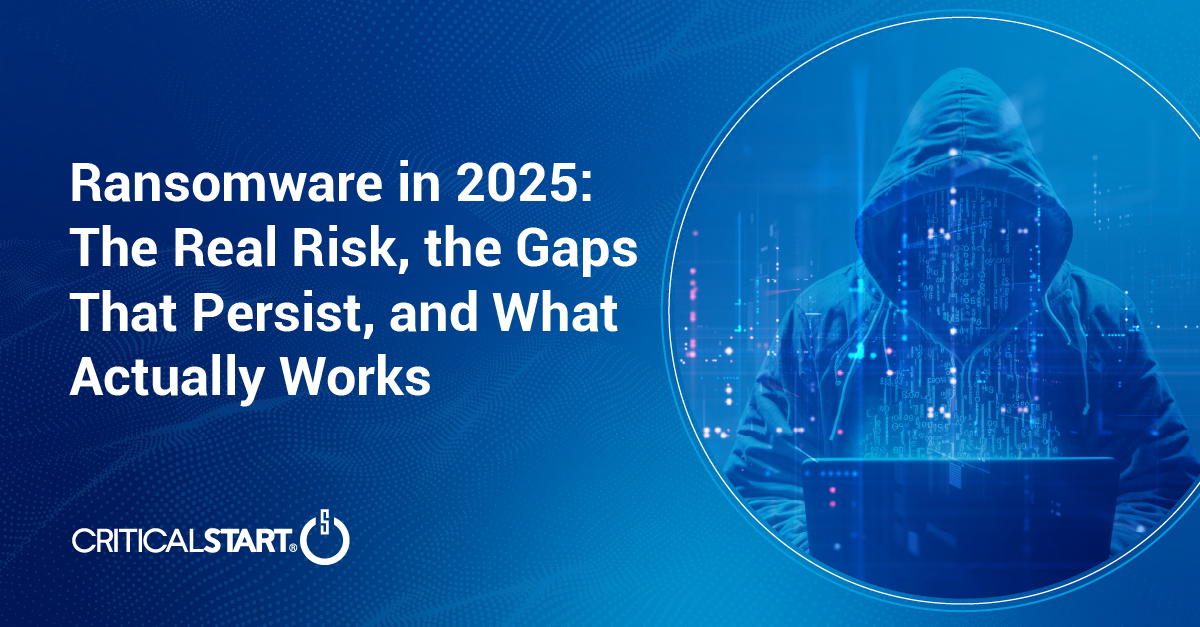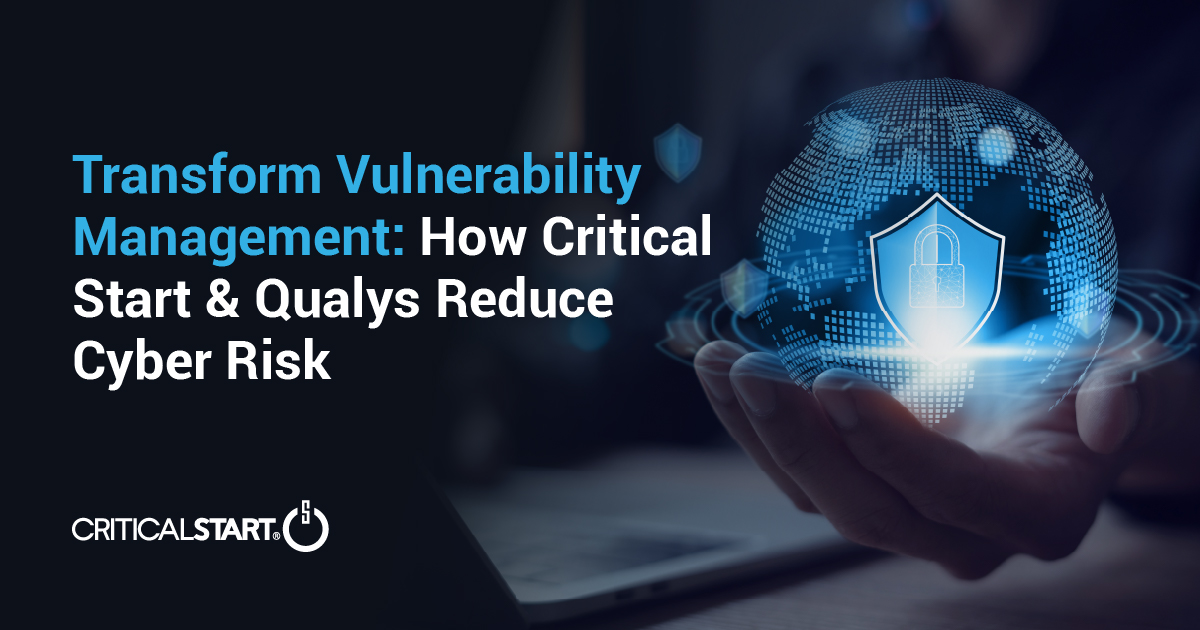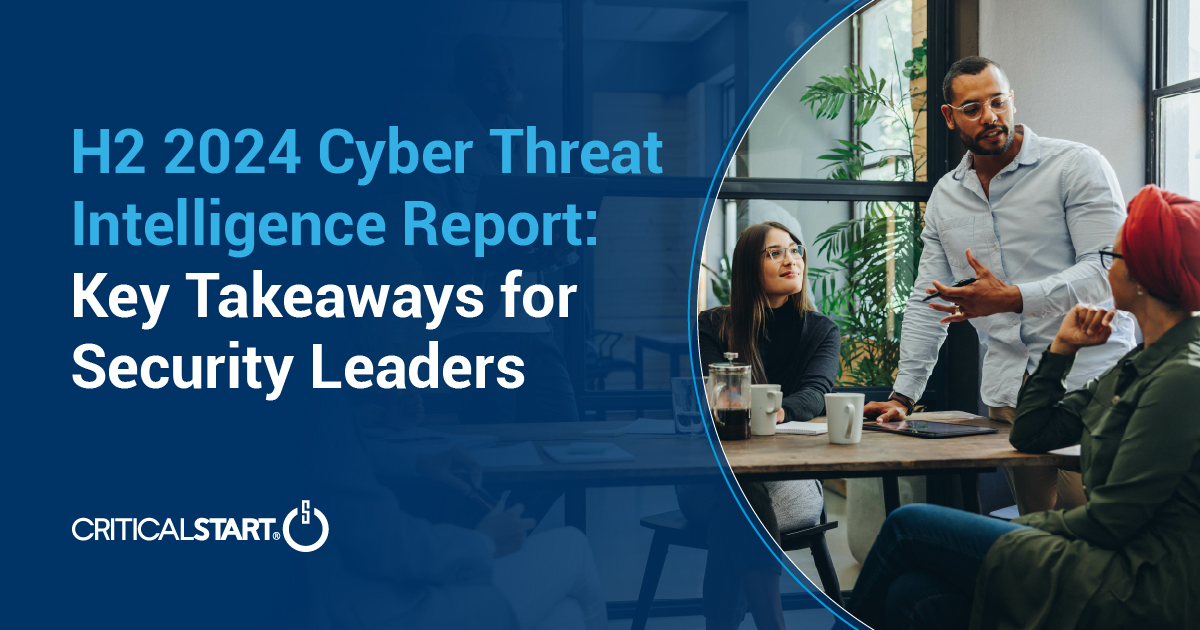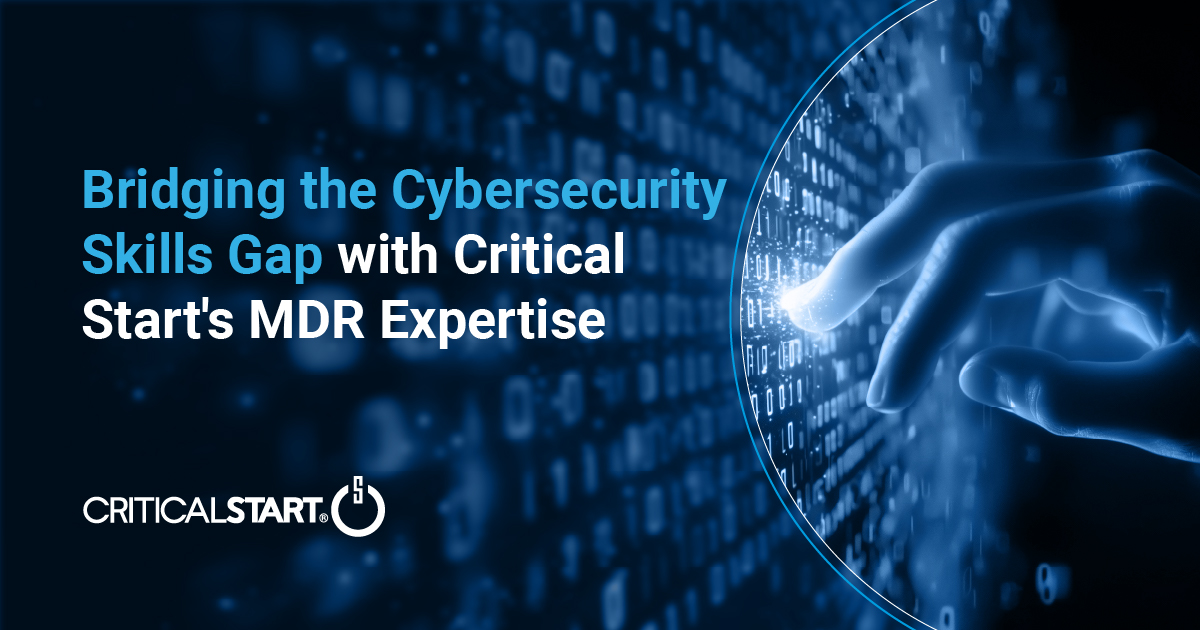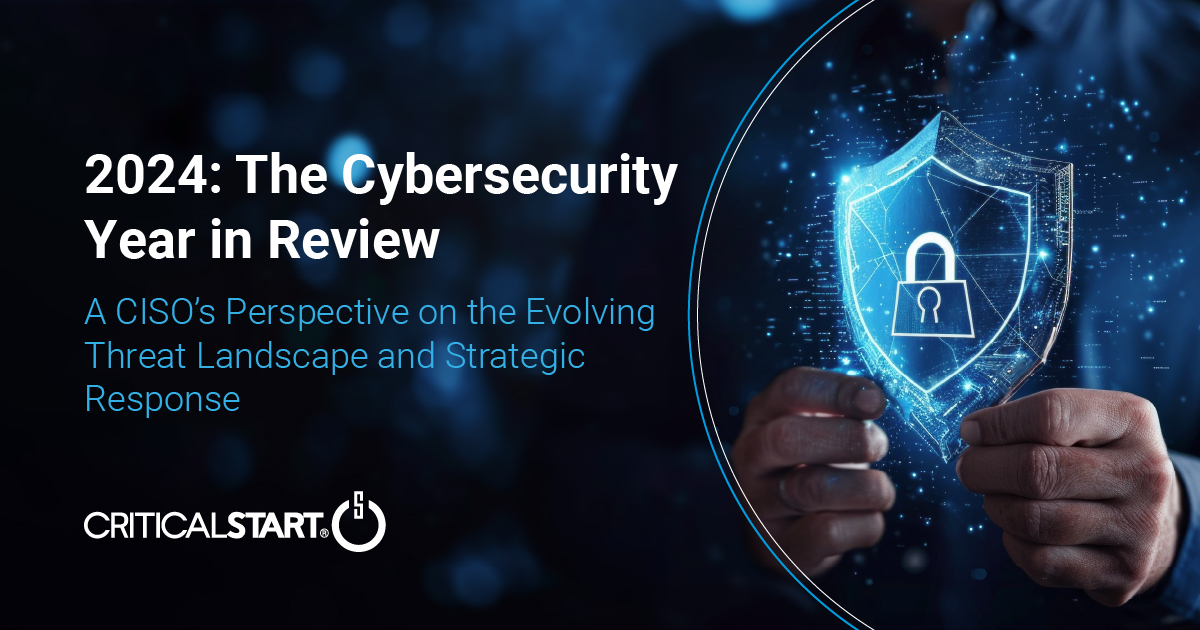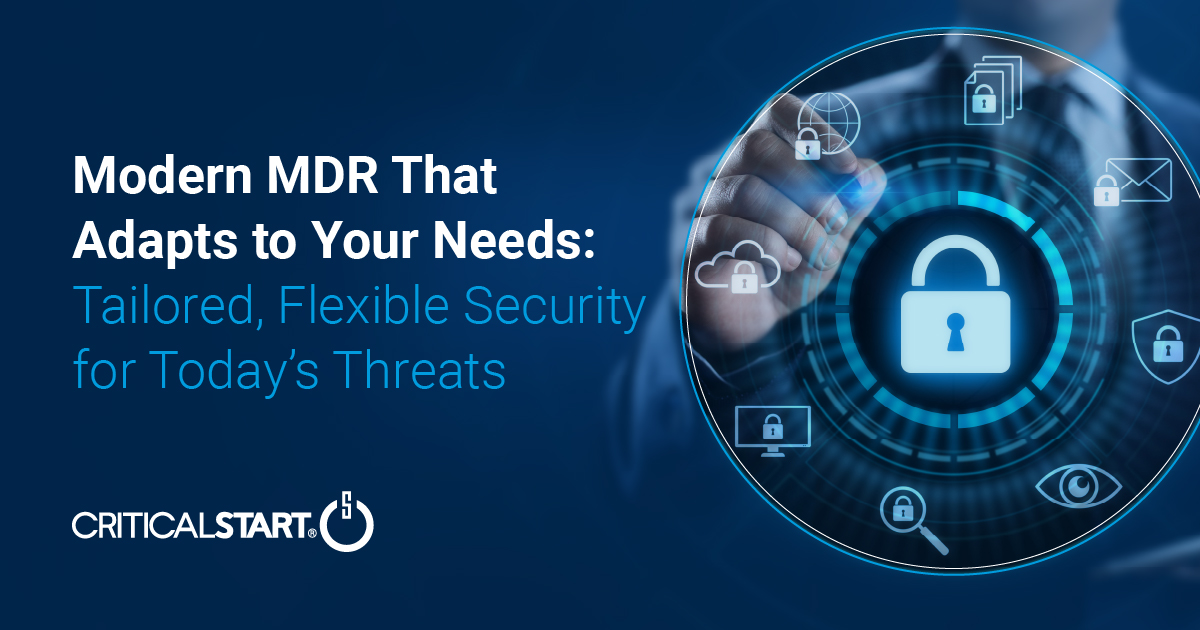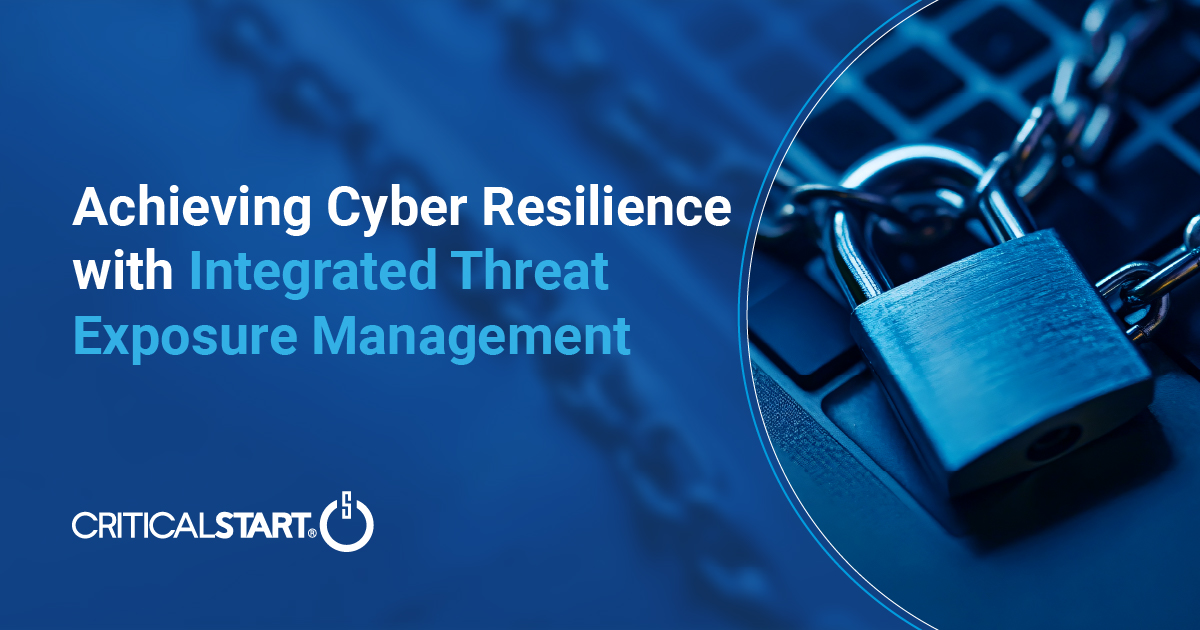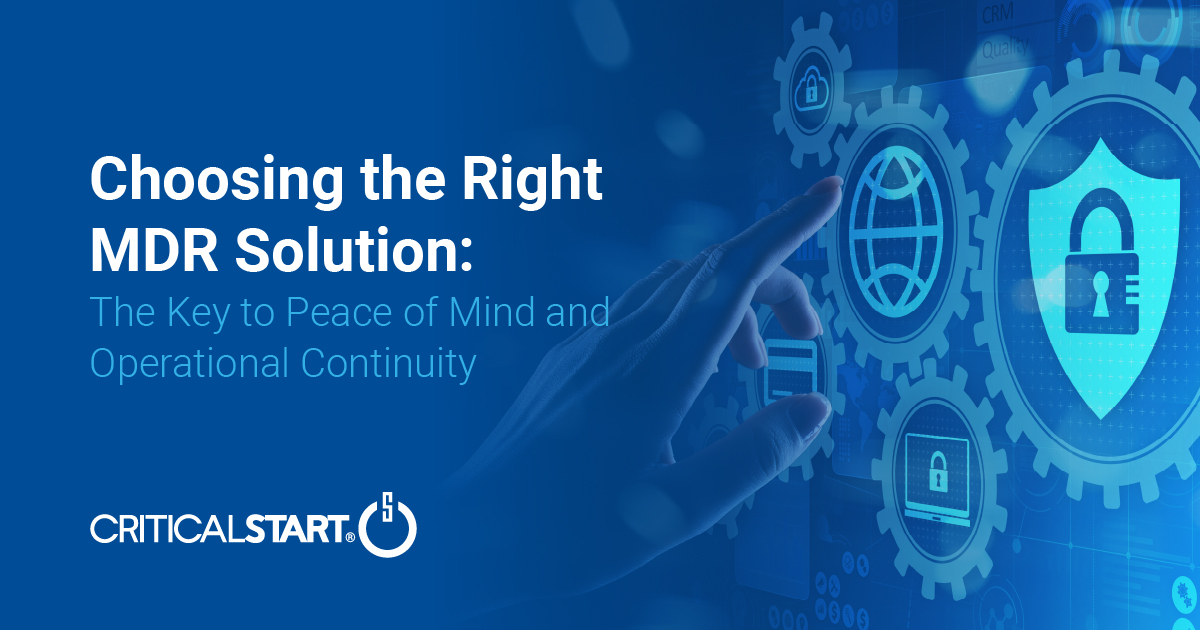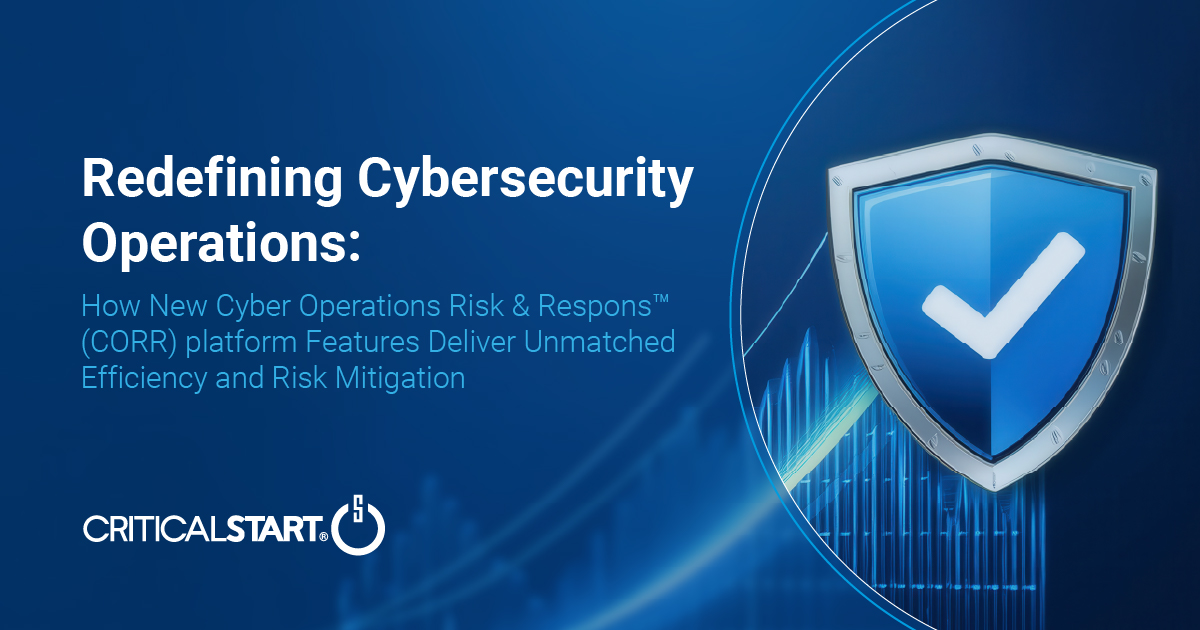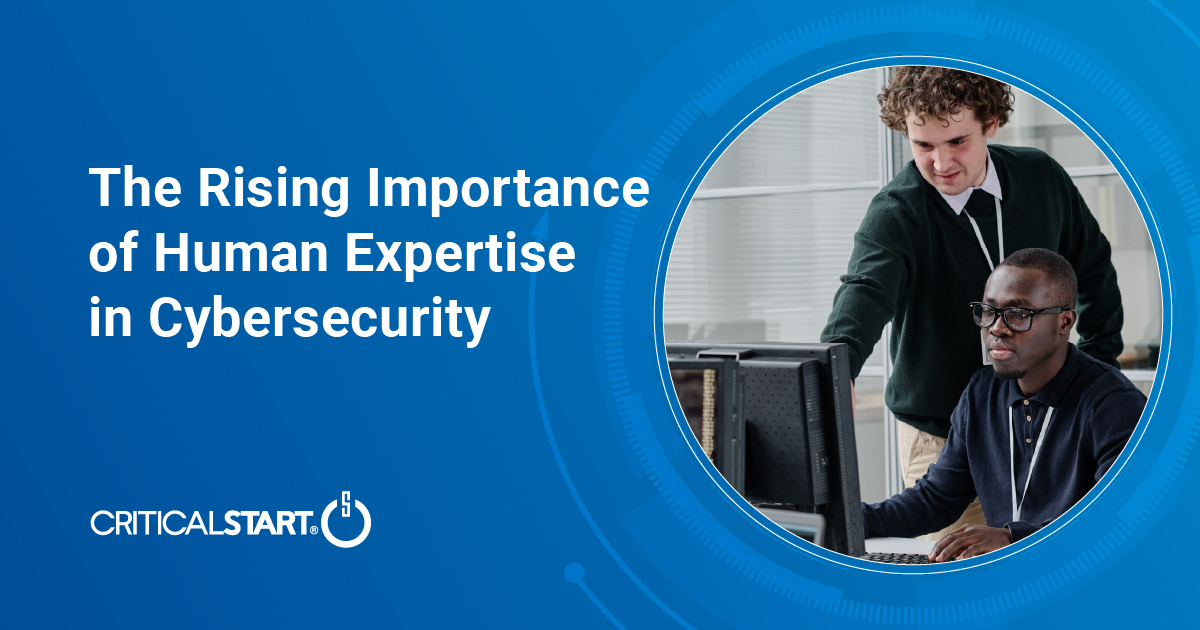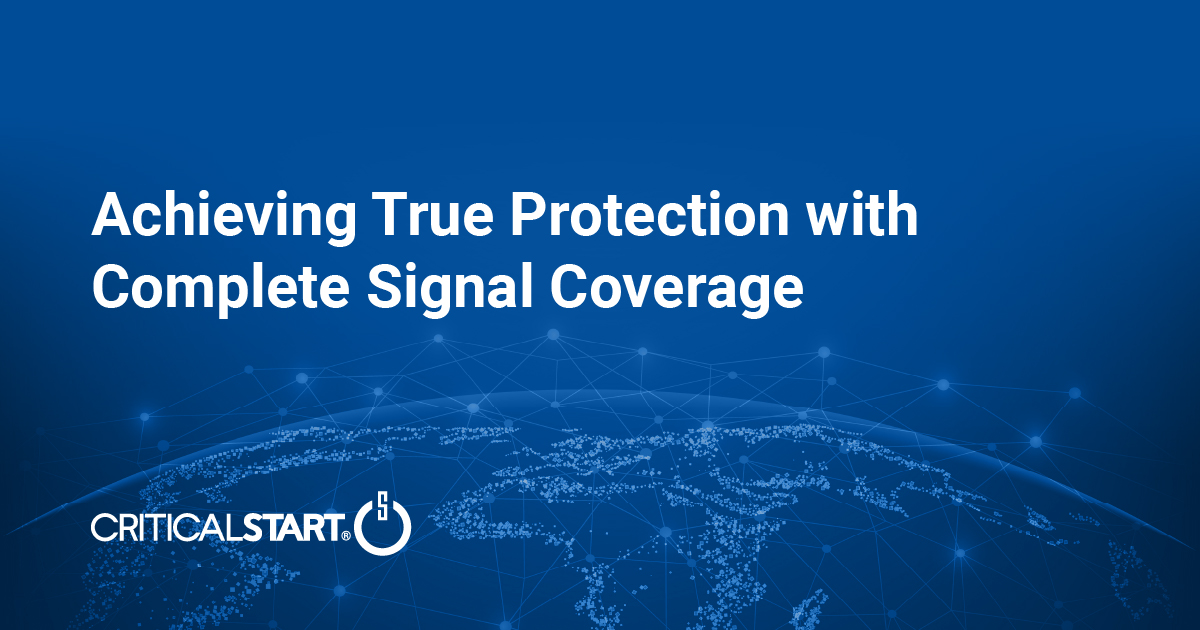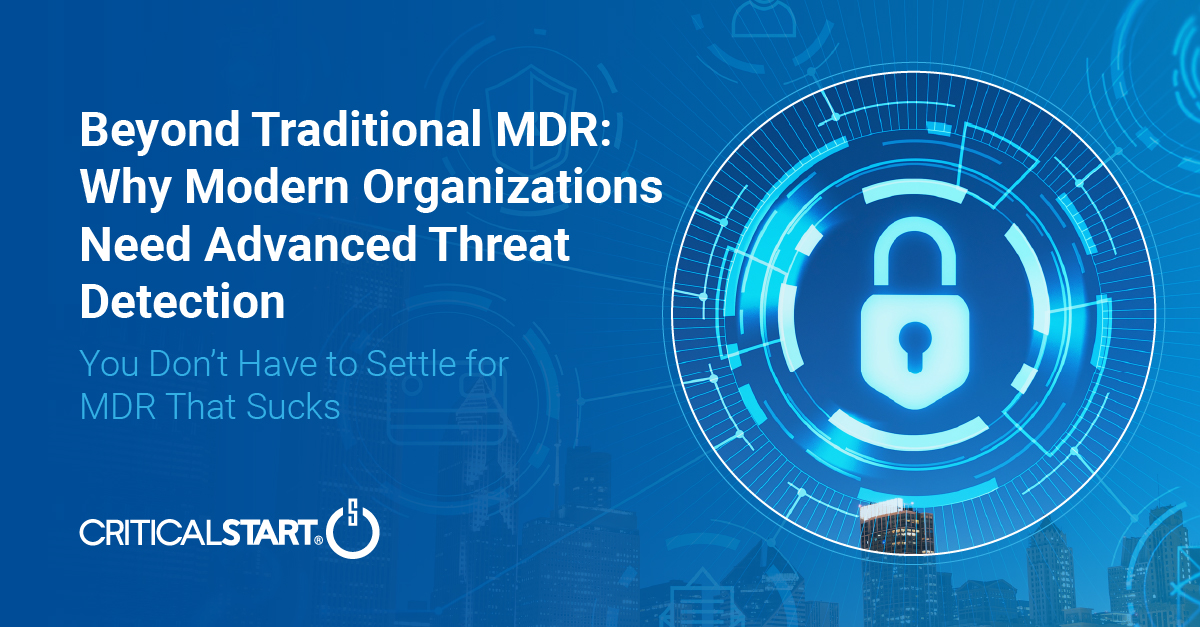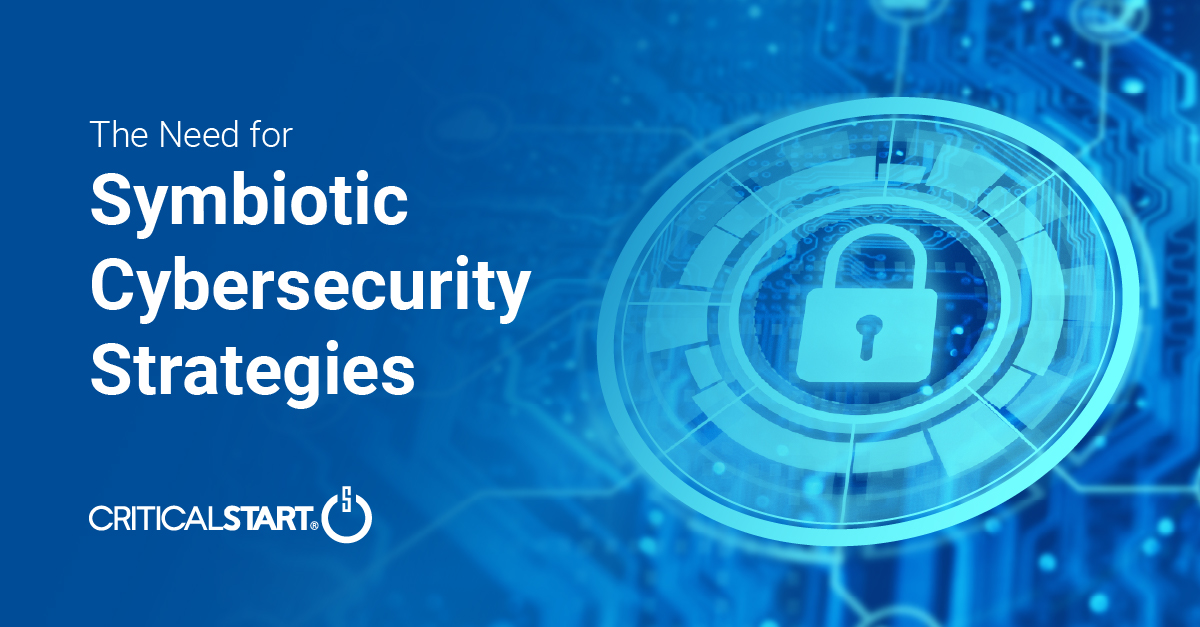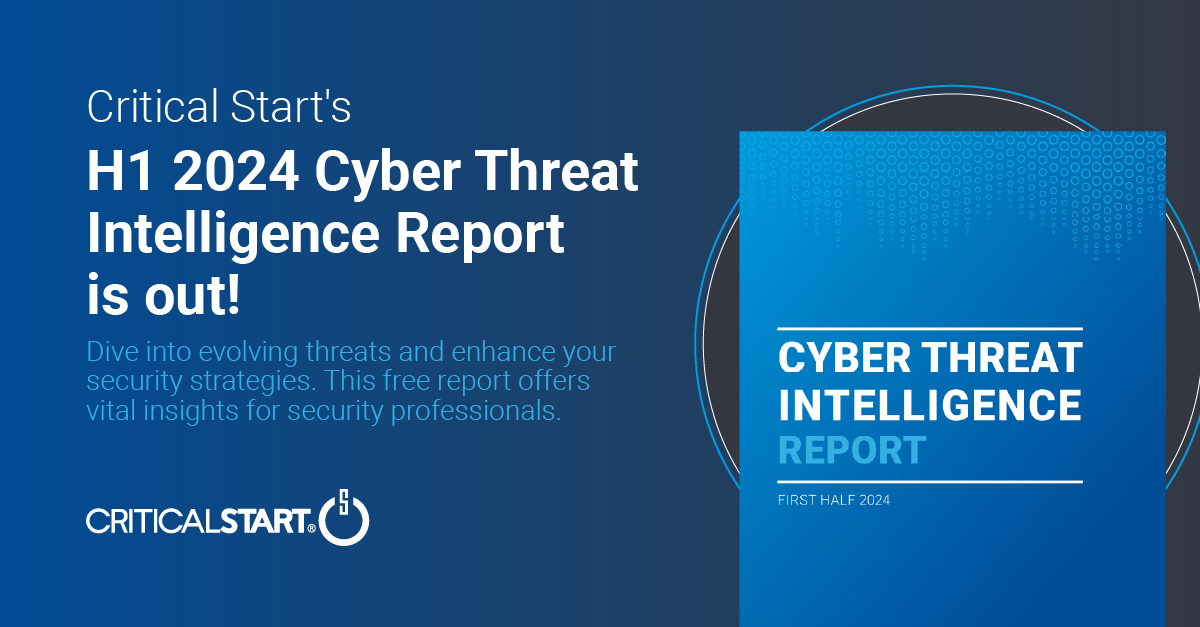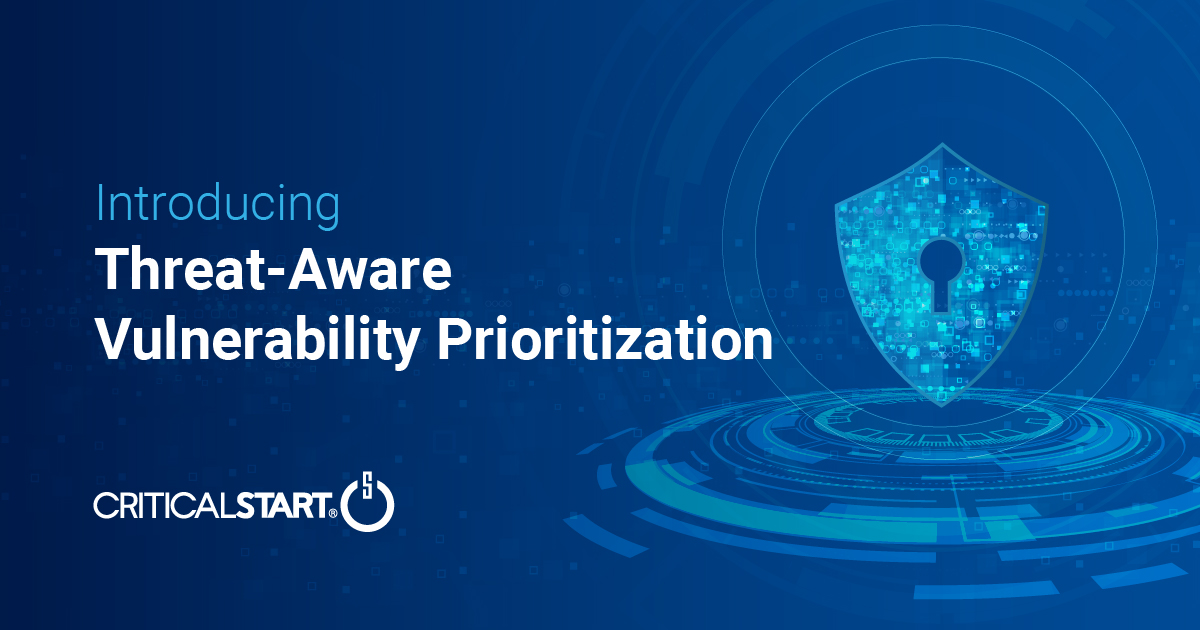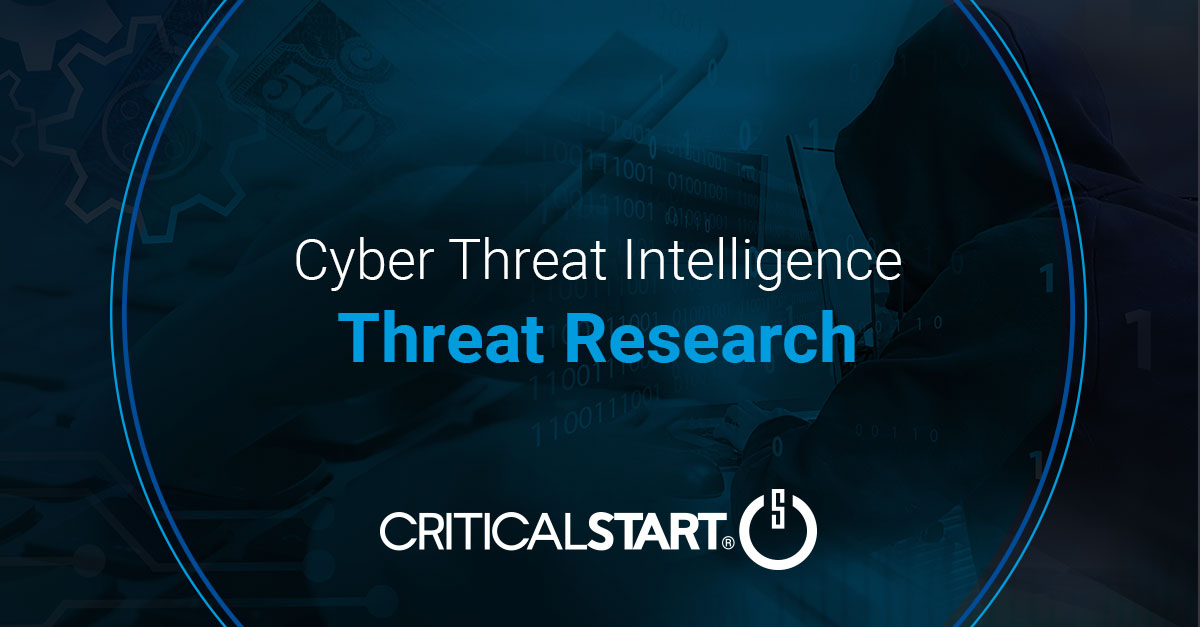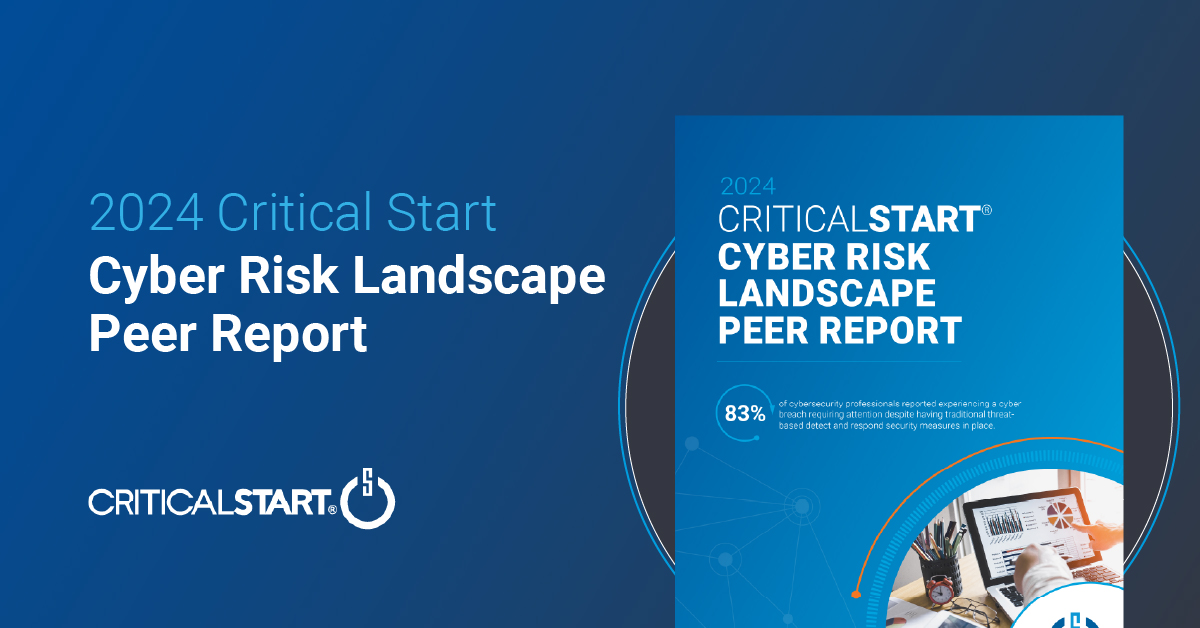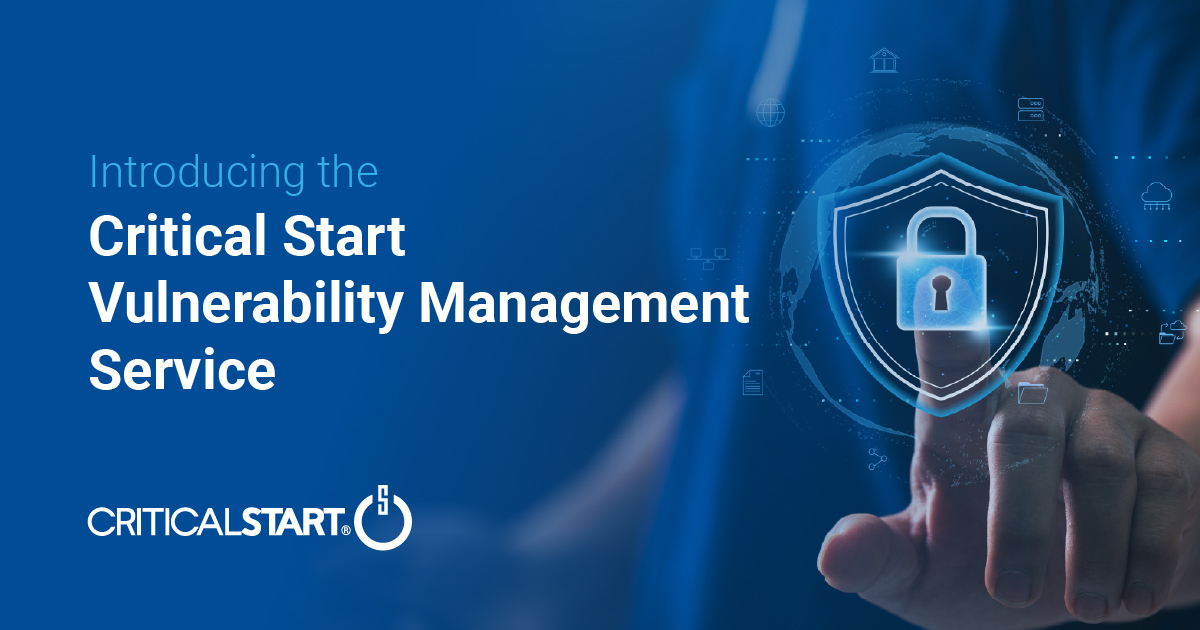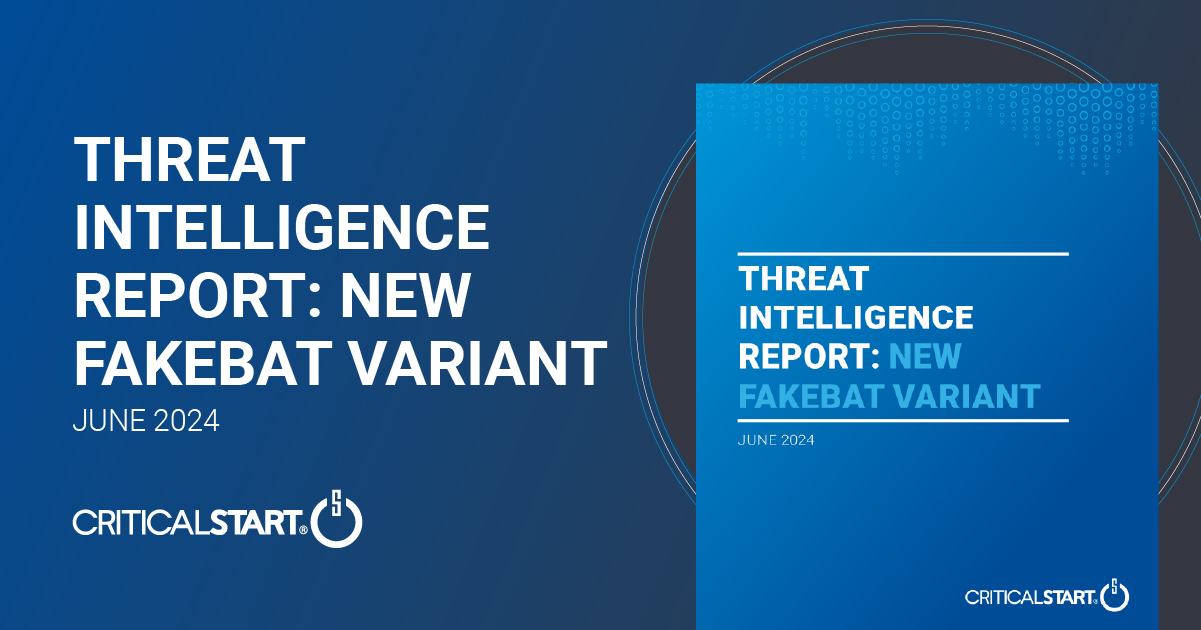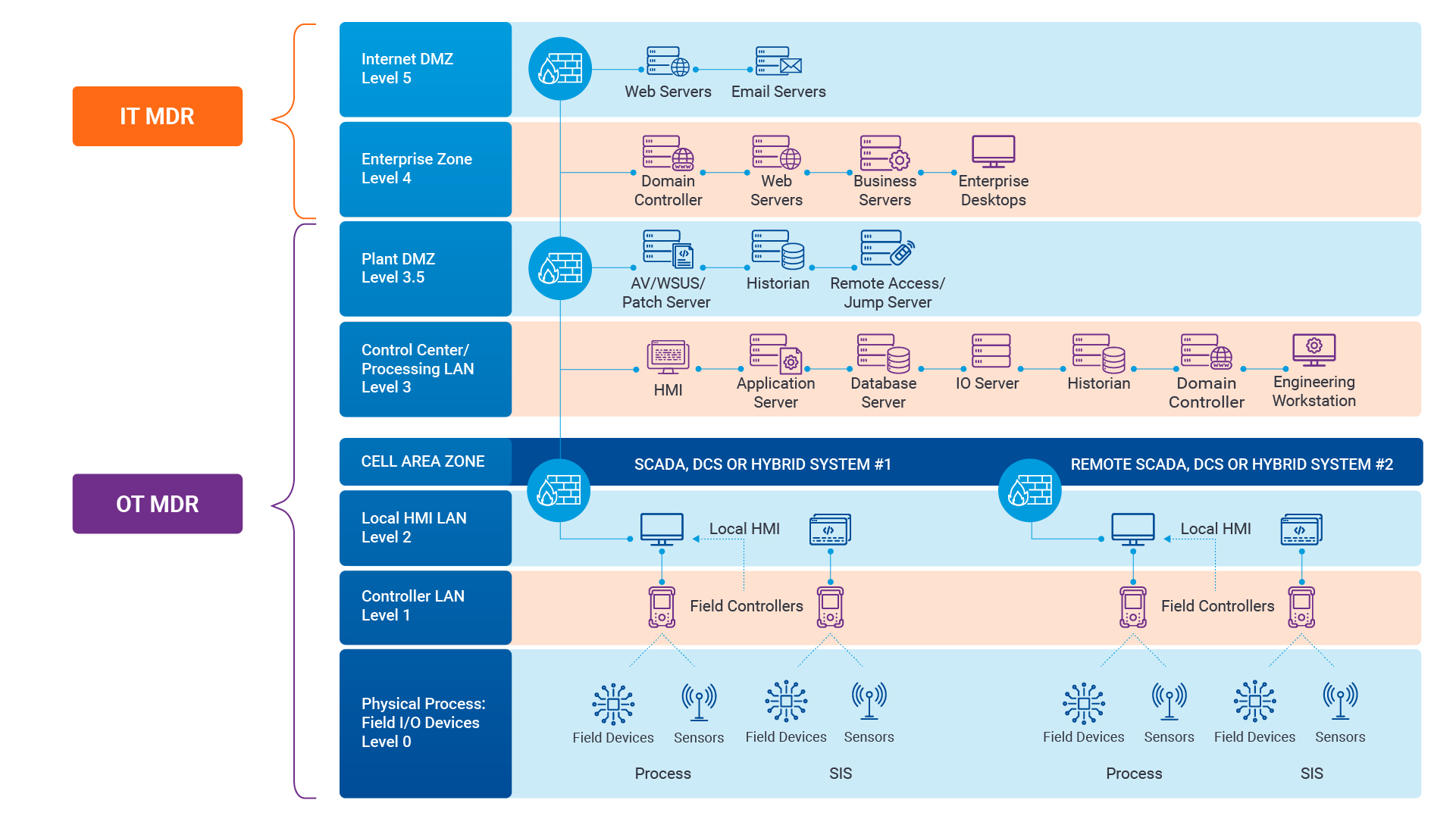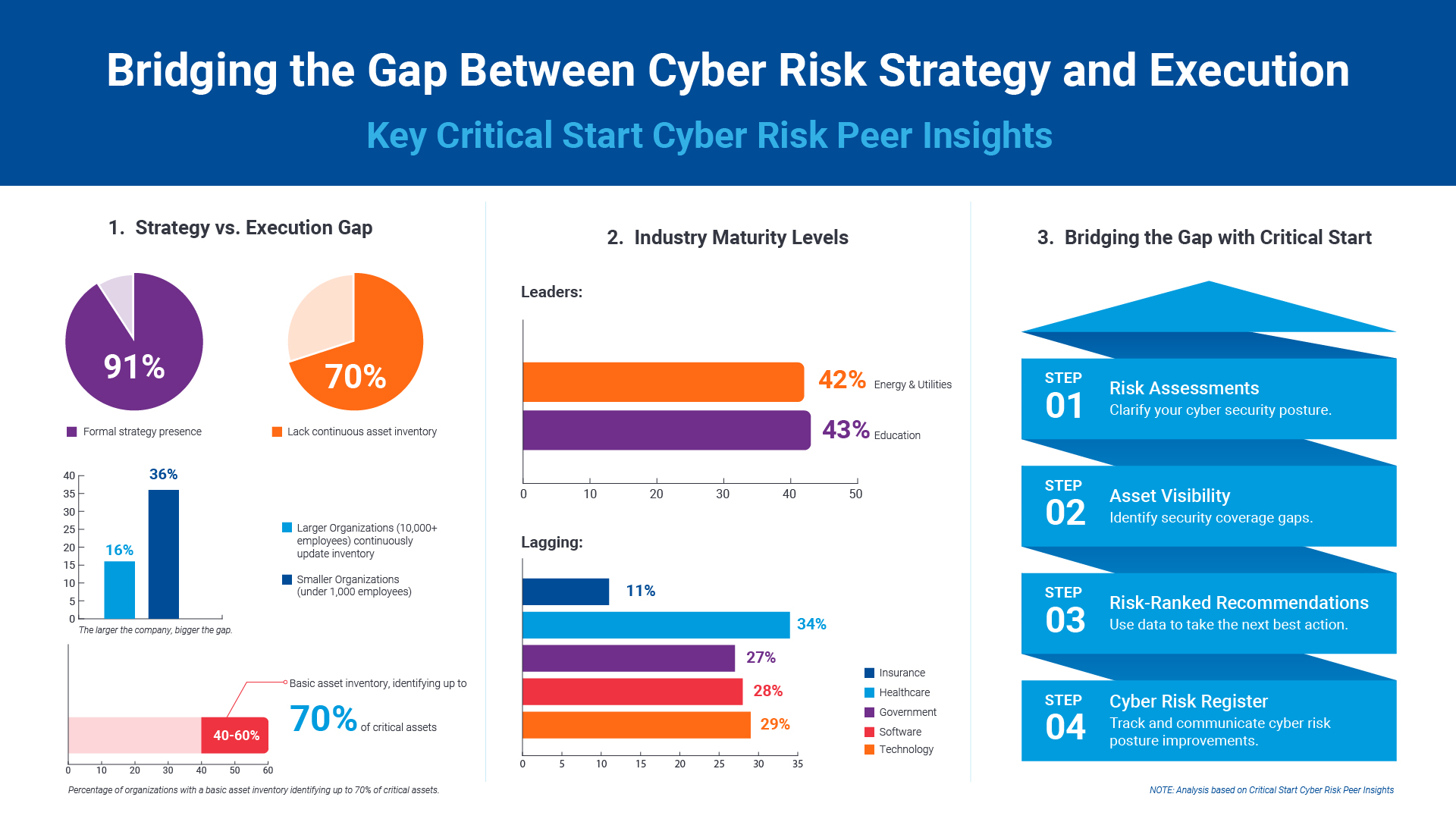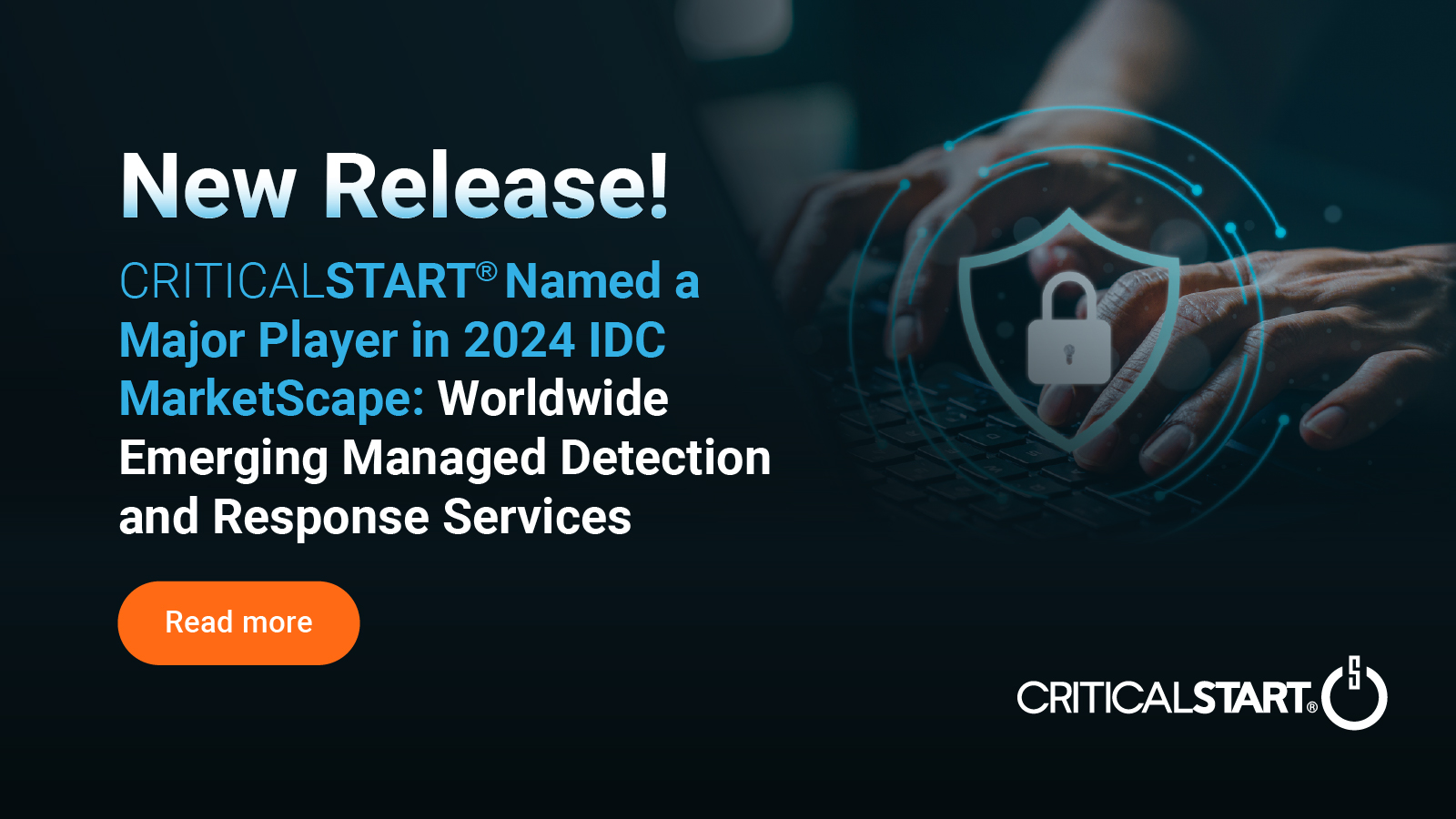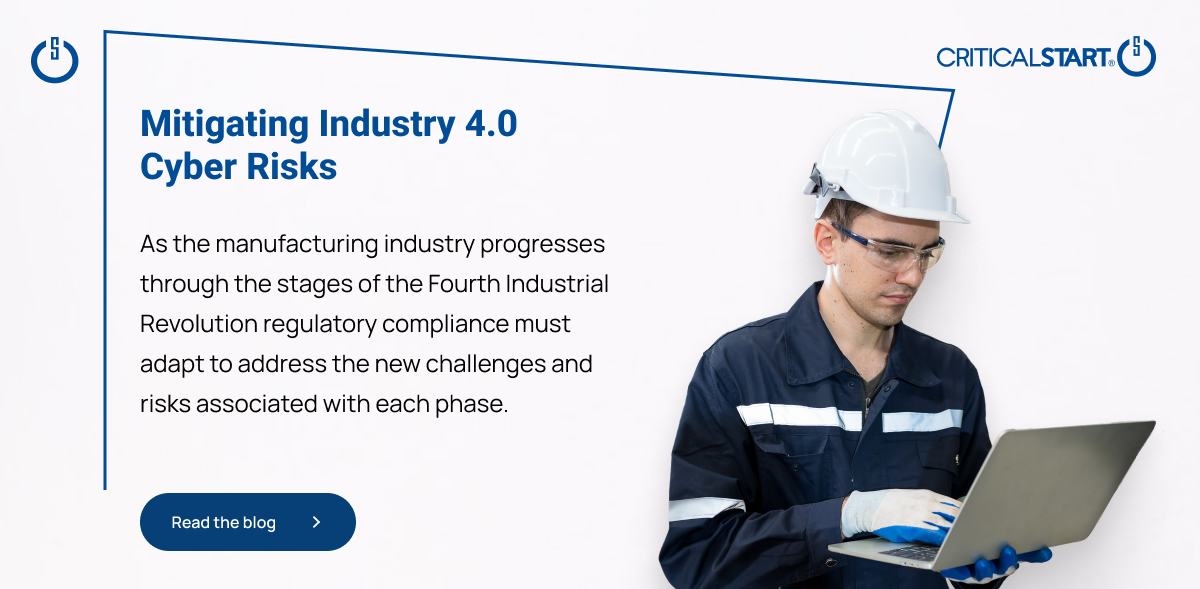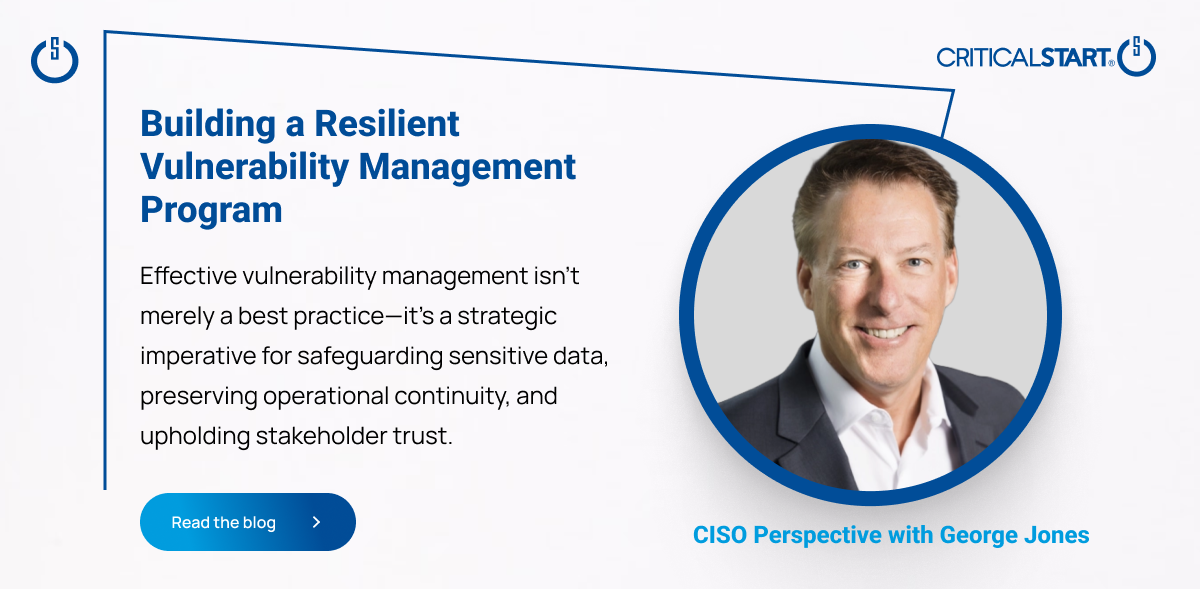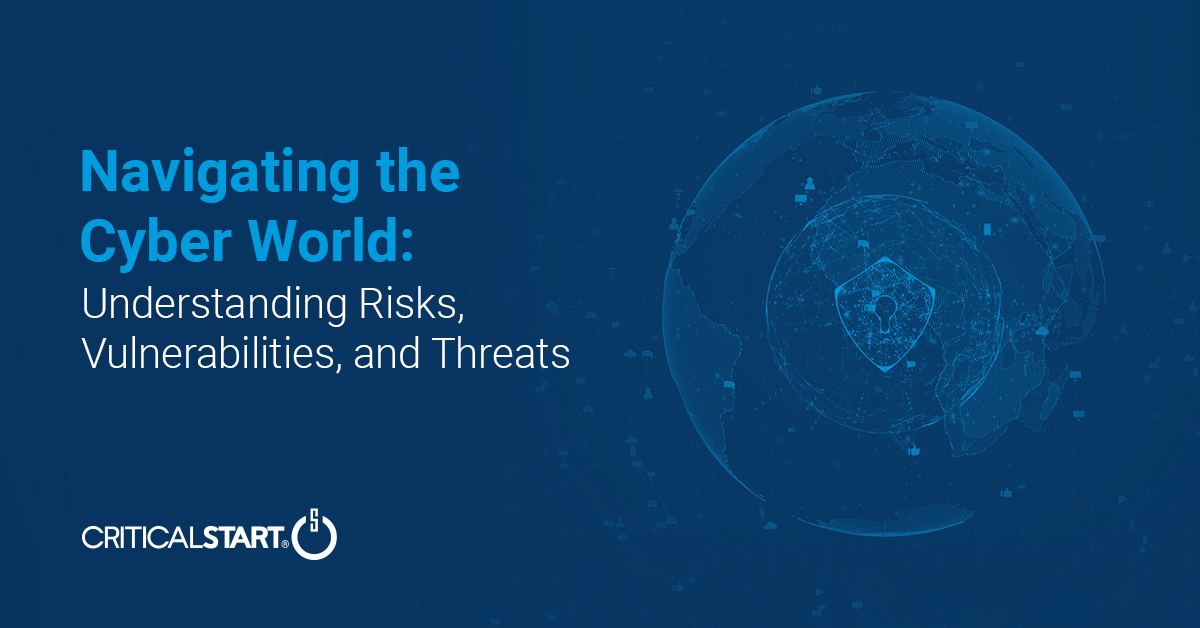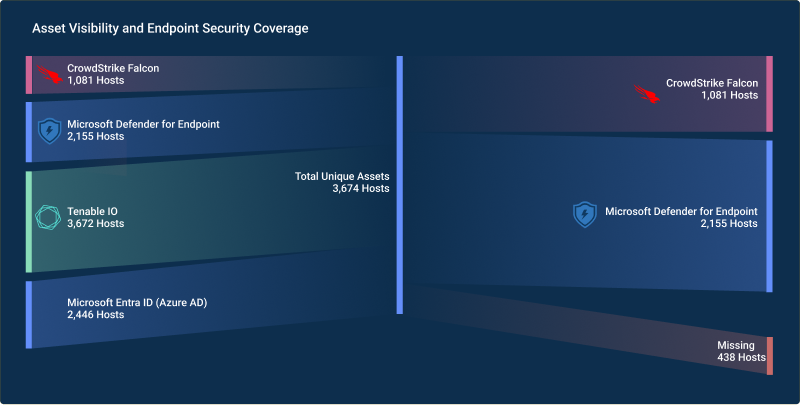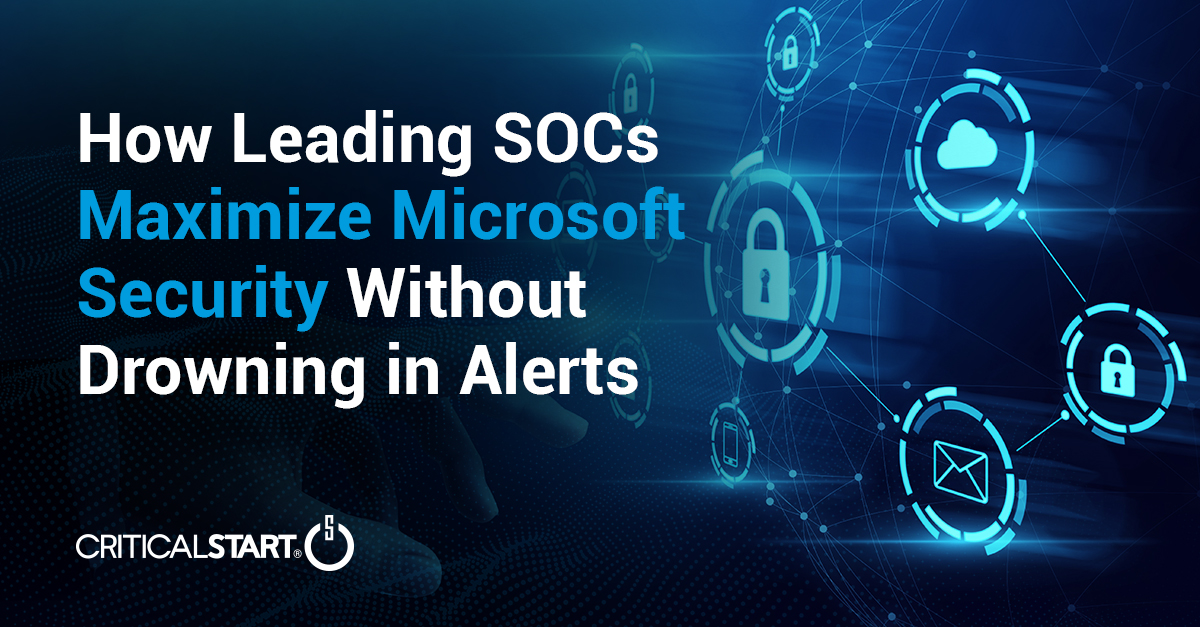In next-gen cyberattacks and vulnerabilities, you’re fighting the unknown. Building a catalog of trusted behavior to use as a baseline to determine what falls outside normal business variances is one such strategy to change the paradigm of response. CRITICALSTART’s Jordan Mauriello and Michael Balboni, former advisor to Homeland Security and President of Redland Strategies, talk about trusted behavior and evolving strategies.
—
Full Transcript:
JM: Hey guys, Jordan Mauriello with CRITICALSTART here, Senior Vice President of Managed Services. Today I have with me Michael Balboni, President of Redland Strategies, former Senator, Assemblyman, advisor to Homeland Security. Honored to have him here with us today. We’ve been doing some awesome discussions about things that we’re doing at CRITICALSTART and working with Redland Strategies.
JM: Today we wanted to take an opportunity just to talk to Michael about some general cybersecurity issues. He’s a major influencer in our community. I know many of you already know who he is and has had a major impact even on some of the legislature that we’ve seen around our industry too as well. We want to take the time to get some thoughts from him on some of the direction the industry’s going impact that some of the changes we see in cyber in general are having on national defense, the role of Senate and Congress, and where that’s going from a legislature perspective.
JM: We’re going to open up and have a nice, fun conversation here about some of these issues. Thank you so much for being with us, Michael.
MB: Thanks for having me Jordan, and thanks for your service to the country in the military.
JM: Thank you very much, sir. I appreciate your support.
—
MB: Maybe we need to change the whole paradigm of how we look at threats. Are we looking for the bad or should we look at behavior in a trusted kind of way? And maybe build a database, a registry, if you will, to be able to catalog what are the normal course of business operations that we know are trusted behavior and maybe create that baseline that if there’s a variance of that, that we can instantly go and say, “Whoa, that’s what we have to take a look at,” and everything else, you push it back and say, “No, no. Not coming in.” I think that might change the paradigm of response. I’m really interested in that strategy.
JM: Obviously, we agree with you on that one fundamentally as it’s part of our model even here is working off of a model where you’re building a trusted behavioral registry. I think that’s a paradigm shift that the industry has to seize. We constantly play this game where we’re chasing the known bad and always looking for how to identify bad in a higher fidelity mechanism or to add more detail enrichment to known bad, so that we can find it in this massive sea that we talked about earlier.
JM: It’s not working for a couple of reasons. You just talked about the attacker advantage. The attacker advantage is they only have to be right one time, right? We only have to be wrong one time to lose. The expectation that we would hit 100% as defenders is unrealistic. That’s why we have to have that resiliency. I think that’s why the model, the paradigm for analytics, for how we look at data insecurity has to be shifted so dramatically because we are not catching up. We’re definitely falling behind when it comes to that mechanism.
MB: We’re really obsessed with the infrastructure of security and we’re not data-centric. It goes back to your original comment about how we triage what we need to protect. You don’t need to protect everything. No, you don’t. I’m not saying that you should tolerate intrusions, tolerate breaches, but you should at the very least focus all of your efforts on protecting the main point of your company, your business, the people you serve, which is their data and the data you have as your company.
MB: From that perspective, we’ve got to be able to stop anything from getting into that environment. The question becomes “How do we do that effectively, timely?” One of the things that really gets me crazy is when I hear about the dwell time stories, that is the amount of time that malware will sit on a network before it’s discovered and addressed. In that time, so much damage can be done.
MB: As we talked about beforehand, surveilling the network for vulnerabilities, surveilling the network for assets that you might want to raise up in terms of their profile, we want to go get this stuff and then being able to use, to recognize other avenues to get into other networks. A lot of times, what we’re seeing now is that one of the attacks that that will be used is to take a network and make it to a bot network and basically commandeer that network and say, “Okay, now we’re going to use it and we’re going to attack others,” and then you send a note to the network administrator saying, “By the way, we’ve compromised your network. We’re going to use your network to attack others unless you pay this amount of ransom.”
JM: There’s no lack of invention or creativity from the development of different threat factors, but there is a lack of imagination when it comes to how we prevent those things from happening because we’re stuck in his defense, this castle keep type of mentality.
JM: I completely agree and I think you’re right. You see all these different creative mechanisms in the attack. You’ve talked about turning it into a botnet, whether that’s for attack or even for what we call crypto-jacking today. They’re going to take those systems and use the computing resources to mine cryptocurrency. We have all these creative mechanisms. Again, getting back to monetizing that threat. I think the dwell time remarks are dead on. I think some of the reports we’ve seen from some of the big players doing threat intelligence in our space, they’re scathing analysis of our industry’s capability when we’re looking at dwell times in excess of 45, 80, 120-day dwell times as averages in different sectors in our industry.
JM: You definitely see this massive difference in organizations and capability and there’s not a standard set maturity.
![]()
Ransomware in 2025: The Real Risk, the Gaps That Persist, and What Actually Works
Ransomware attacks aren’t slowing down. They’re getting smarter, faster, and more expensive. In ...![]()
Security Operations Leaders: The Chaos Is Real
If you’re a CISO, SOC leader, or InfoSec pro, you’ve felt it. Alert volumes spike. Tools multipl...![]()
Transform Vulnerability Management: How Critical Start & Qualys Reduce Cyber Risk
In a recent webinar co-hosted by Qualys and Critical Start, experts from both organizations discusse...![]()
H2 2024 Cyber Threat Intelligence Report: Key Takeaways for Security Leaders
In a recent Critical Start webinar, cyber threat intelligence experts shared key findings from the H...![]()
Bridging the Cybersecurity Skills Gap with Critical Start’s MDR Expertise
During a recent webinar hosted by CyberEdge, Steven Rosenthal, Director of Product Management at Cri...![]()
2024: The Cybersecurity Year in Review
A CISO’s Perspective on the Evolving Threat Landscape and Strategic Response Introduction 2024 has...![]()
Modern MDR That Adapts to Your Needs: Tailored, Flexible Security for Today’s Threats
Every organization faces unique challenges in today’s dynamic threat landscape. Whether you’re m...![]()
Achieving Cyber Resilience with Integrated Threat Exposure Management
Welcome to the third and final installment of our three-part series Driving Cyber Resilience with Hu...Why Remote Containment and Active Response Are Non-Negotiables in MDR
You Don’t Have to Settle for MDR That Sucks Welcome to the second installment of our three-part bl...![]()
Choosing the Right MDR Solution: The Key to Peace of Mind and Operational Continuity
Imagine this: an attacker breaches your network, and while traditional defenses scramble to catch up...![]()
Redefining Cybersecurity Operations: How New Cyber Operations Risk & Response™ (CORR) platform Features Deliver Unmatched Efficiency and Risk Mitigation
The latest Cyber Operations Risk & Response™ (CORR) platform release introduces groundbreaking...![]()
The Rising Importance of Human Expertise in Cybersecurity
Welcome to Part 1 of our three-part series, Driving Cyber Resilience with Human-Driven MDR: Insights...![]()
Achieving True Protection with Complete Signal Coverage
Cybersecurity professionals know all too well that visibility into potential threats is no longer a ...![]()
Beyond Traditional MDR: Why Modern Organizations Need Advanced Threat Detection
You Don’t Have to Settle for MDR That Sucks Frustrated with the conventional security measures pro...The Power of Human-Driven Cybersecurity: Why Automation Alone Isn’t Enough
Cyber threats are increasingly sophisticated, and bad actors are attacking organizations with greate...Importance of SOC Signal Assurance in MDR Solutions
In the dynamic and increasingly complex field of cybersecurity, ensuring the efficiency and effectiv...The Hidden Risks: Unmonitored Assets and Their Impact on MDR Effectiveness
In the realm of cybersecurity, the effectiveness of Managed Detection and Response (MDR) services hi...![]()
The Need for Symbiotic Cybersecurity Strategies | Part 2: Integrating Proactive Security Intelligence into MDR
In Part 1 of this series, The Need for Symbiotic Cybersecurity Strategies, we explored the critical ...Finding the Right Candidate for Digital Forensics and Incident Response: What to Ask and Why During an Interview
So, you’re looking to add a digital forensics and incident response (DFIR) expert to your team. Gr...![]()
The Need for Symbiotic Cybersecurity Strategies | Part I
Since the 1980s, Detect and Respond cybersecurity solutions have evolved in response to emerging cyb...![]()
Critical Start H1 2024 Cyber Threat Intelligence Report
Critical Start is thrilled to announce the release of the Critical Start H1 2024 Cyber Threat Intell...![]()
Now Available! Critical Start Vulnerability Prioritization – Your Answer to Preemptive Cyber Defense.
Organizations understand that effective vulnerability management is critical to reducing their cyber...![]()
Recruiter phishing leads to more_eggs infection
With additional investigative and analytical contributions by Kevin Olson, Principal Security Analys...![]()
2024 Critical Start Cyber Risk Landscape Peer Report Now Available
We are excited to announce the release of the 2024 Critical Start Cyber Risk Landscape Peer Report, ...Critical Start Managed XDR Webinar — Increase Threat Protection, Reduce Risk, and Optimize Operational Costs
Did you miss our recent webinar, Stop Drowning in Logs: How Tailored Log Management and Premier Thre...Pulling the Unified Audit Log
During a Business Email Compromise (BEC) investigation, one of the most valuable logs is the Unified...![]()
Set Your Organization Up for Risk Reduction with the Critical Start Vulnerability Management Service
With cyber threats and vulnerabilities constantly evolving, it’s essential that organizations take...![]()
Announcing the Latest Cyber Threat Intelligence Report: Unveiling the New FakeBat Variant
Critical Start announces the release of its latest Cyber Threat Intelligence Report, focusing on a f...Cyber Risk Registers, Risk Dashboards, and Risk Lifecycle Management for Improved Risk Reduction
Just one of the daunting tasks Chief Information Security Officers (CISOs) face is identifying, trac...![]()
Beyond SIEM: Elevate Your Threat Protection with a Seamless User Experience
Unraveling Cybersecurity Challenges In our recent webinar, Beyond SIEM: Elevating Threat Prote...![]()
Navigating the Convergence of IT and OT Security to Monitor and Prevent Cyberattacks in Industrial Environments
The blog Mitigating Industry 4.0 Cyber Risks discussed how the continual digitization of the manufac...![]()
Critical Start Cyber Risk Peer Insights – Strategy vs. Execution
Effective cyber risk management is more crucial than ever for organizations across all industries. C...![]() Press Release
Press ReleaseCritical Start Named a Major Player in IDC MarketScape for Emerging Managed Detection and Response Services 2024
Critical Start is proud to be recognized as a Major Player in the IDC MarketScape: Worldwide Emergin...Introducing Free Quick Start Cyber Risk Assessments with Peer Benchmark Data
We asked industry leaders to name some of their biggest struggles around cyber risk, and they answer...Efficient Incident Response: Extracting and Analyzing Veeam .vbk Files for Forensic Analysis
Introduction Incident response requires a forensic analysis of available evidence from hosts and oth...![]()
Mitigating Industry 4.0 Cyber Risks
As the manufacturing industry progresses through the stages of the Fourth Industrial Revolution, fro...![]()
CISO Perspective with George Jones: Building a Resilient Vulnerability Management Program
In the evolving landscape of cybersecurity, the significance of vulnerability management cannot be o...![]()
Navigating the Cyber World: Understanding Risks, Vulnerabilities, and Threats
Cyber risks, cyber threats, and cyber vulnerabilities are closely related concepts, but each plays a...The Next Evolution in Cybersecurity — Combining Proactive and Reactive Controls for Superior Risk Management
Evolve Your Cybersecurity Program to a balanced approach that prioritizes both Reactive and Proactiv...![]()
CISO Perspective with George Jones: The Top 10 Metrics for Evaluating Asset Visibility Programs
Organizations face a multitude of threats ranging from sophisticated cyberattacks to regulatory comp...![]()
How Leading SOCs Maximize Microsoft Security Without Drowning in Alerts
Microsoft Defender and Sentinel give security teams powerful tools to detect threats across endpoint...![]() Datasheet
DatasheetCRITICALSTART® Advisory SOC Analyst (ASA)
Discover how Critical Start’s Advisory SOC Analyst (ASA) service adds personalized expertise to yo...![]() Datasheet
DatasheetMDR Use Cases
Discover how Critical Start MDR delivers rapid, SLA-backed threat detection and response across your...
Newsletter Signup
Stay up-to-date on the latest resources and news from CRITICALSTART.
Thanks for signing up!
